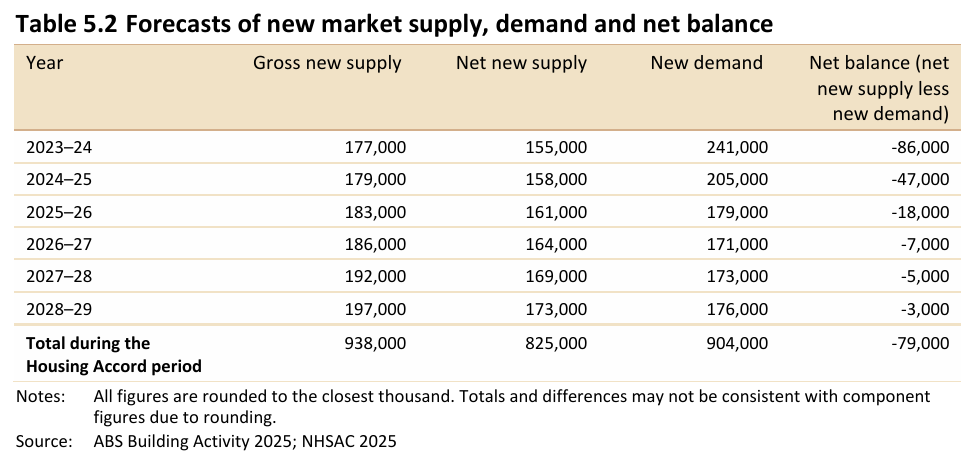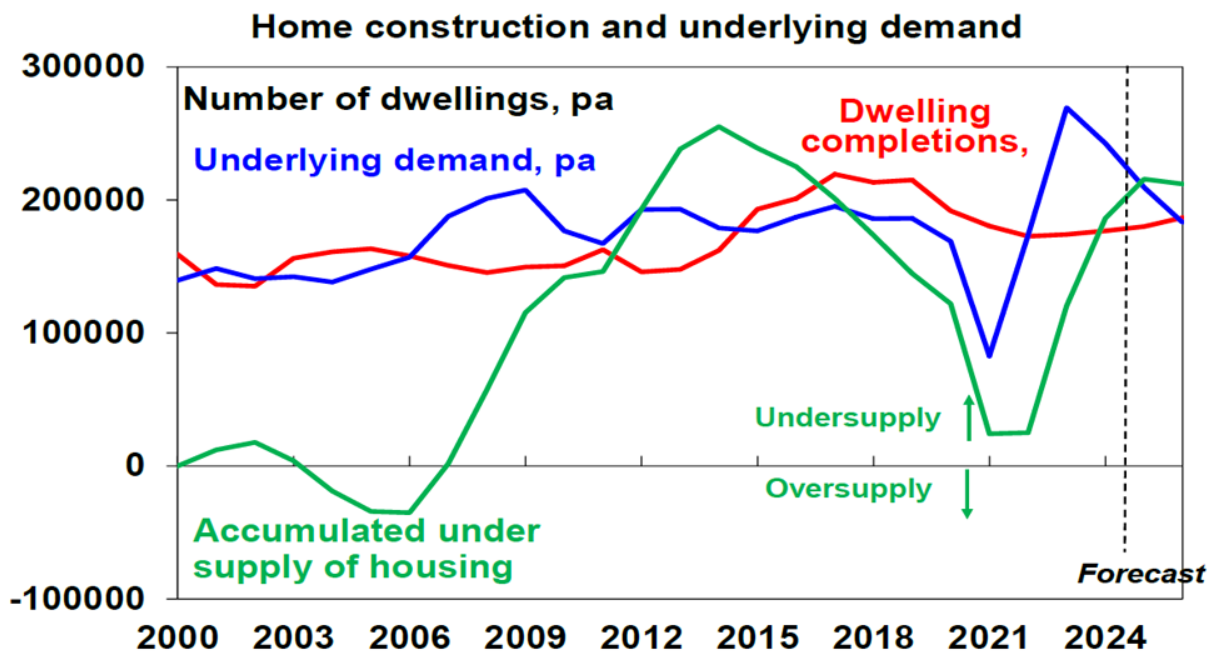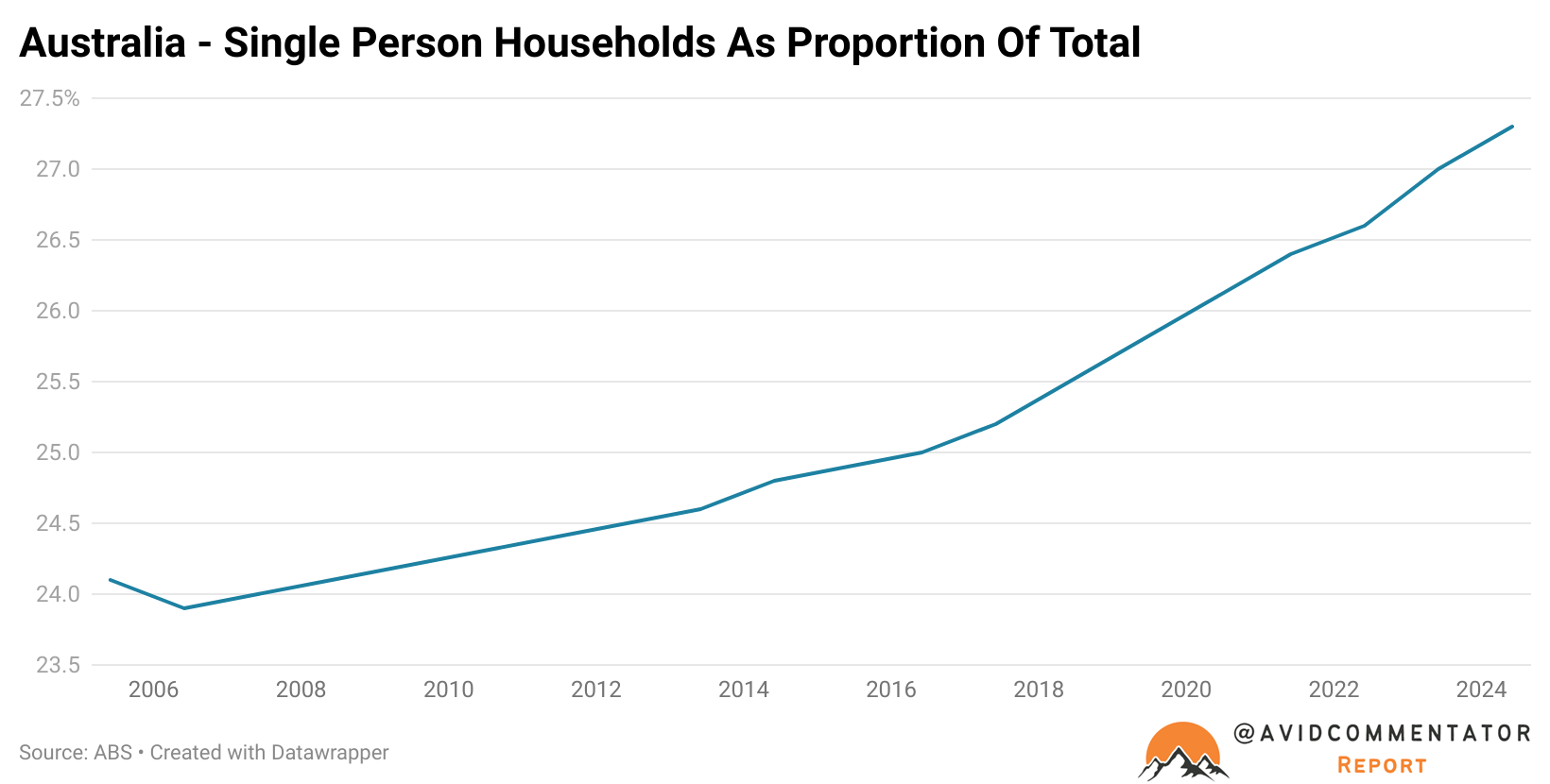As 2025 unfolds, Australia finds itself in a peculiar position. The nation is experiencing a housing shortage, which the government acknowledges is worsening.
The Albanese government’s National Housing Supply and Affordability Council forecasts that growth in housing demand will outstrip supply throughout 2023-24, 2024-25, and will continue to do so through to 2028-29.

Yet despite this revelation from a federal government agency, a set of conditions continues to be pursued that will likely cause the nation’s housing shortage to worsen.
Which begs the question, what would it take for the housing shortage to be resolved by, say, the end of the decade?
The basis for today’s scenarios will be drawn from expert commentary from AMP Chief Economist Shane Oliver and HIA Chief Economist Tim Reardon.
According to AMP:
“Our assessment is that the accumulated housing shortfall (the green line in the next chart) is around 200,000 dwellings at least and possibly 300,000 depending on what is assumed in terms of the number of people per household.”

What Oliver is referring to by the number of people per household is effectively the impact of changing household demographics on housing demand.
The ongoing rise in the proportion of single-occupant households is perhaps the most notable expression of this.

Meanwhile, HIA’s Tim Reardon estimates that under normal economic conditions, the housing needs of solely the domestic populace are around 100,000 to 120,000 dwelling completions per year and that is before migration is factored into the equation.
So let’s take the lower-end estimate for both to give the most favourable scenario for resolving the housing shortage and still maintaining a migration intake the best chance for success.
We are also going to assume that the economy can average 190,000 dwelling completions per year out to 2030, which may be somewhat ambitious, but again, we are quite deliberately being favourable.
With 100,000 of the 190,000 dwelling completions taken up by domestic demand, that leaves 90,000 per year with which to alleviate the housing shortage and provide homes for new migrants.
Assuming that magically the new migration and dwelling completion settings would be in place from January 1st next year, we would need 57,500 completions to be put toward alleviating the housing shortage after accounting for the impact of knockdown rebuilds and redevelopments (not all completions result in a net addition to housing stock), as well as the inevitable empty homes at any given time.
That leaves 37,500 completions to be put toward the needs of new arrivals each year.
After factoring in that some of those homes would be redevelopments and not all would be occupied, that puts the viable level of net migration at a little over 80,000 per year.
The Takeaway
Today’s exercise took the best-case scenario from both of the experts cited.
If we were to rerun the numbers as a shortage of 300,000 homes and 120,000 dwelling completions being required each year solely for the domestic populace, that would render a negative level of net migration required to resolve that degree of housing shortage by the end of the decade.
While there are naturally other estimates for the level of underlying domestic housing demand and the degree to which the nation has a housing shortage, today’s exercise serves to illustrate the challenges in alleviating that shortage as the nation’s shifting household demographics become a major factor in the annual growth in housing demand.
Ultimately, whether one takes their housing shortage estimate from HIA or from the National Housing Supply and Affordability Council, there is no pathway to a swift resolution of this issue that isn’t paved with dramatically lower levels of net migration.

